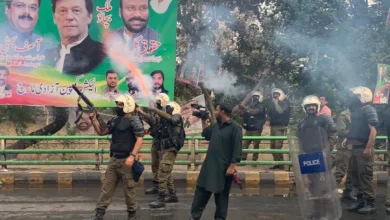Why is Israel bombing Gaza hospitals, ambulances? It’s all about ‘winning’
Neve Gordon

Neve Gordon
Across Israel, huge billboards tower over central highways, while large placards have been placed in front of schools, supermarkets, and government buildings. They all feature a new slogan: “Together we will win.”
The slogan is short and sharp (in Hebrew, it is made up of two words, “beyahad nenatzeach”) and has been embraced by large segments of Israel’s Jewish population. Part of its attraction is likely due to its ambiguity, allowing each viewer to interpret the word “win” differently.
Despite different interpretations of what victory would look like, however, there appears to be wide consensus among Israelis that a victory of any type can only be achieved through unleashing lethal violence on Gaza.
Otherwise, how do we explain that when fleeing residents, travelling on a road Israel identified as a “safe route” to the south, are hit by a deadly air strike not a single voice on mainstream media is heard criticising the assault? Nor do we hear any outrage when bombs are dropped in the middle of one of the most crowded neighbourhoods in Jabalia refugee camp or when missiles strike a convoy of ambulances. For most Israelis, “winning” currently seems to justify almost any violence.
As the past month demonstrates, most Israelis appear to have had no qualms about the military dropping 30,000 tonnes of explosives on Gaza, damaging around 50 percent of all housing units throughout the Gaza Strip, and rendering at least 10 percent of these uninhabitable. Almost 70 percent of Gaza’s population of 2.3 million has been forcibly displaced from their homes due to bombing and raids. Half of the hospitals and 62 percent of primary care health centres are effectively out of service and one-third of all schools have been damaged and about nine percent are now out of service.
This, many Israeli Jews believe, is part of what is needed to “win” and, thus, the Palestinians will just have to suffer thousands of civilian casualties, including the deaths of the more than 4,000 children killed to date. They seem to accept that “winning” entails killing on average six children every hour since October 7, and transforming Gaza into a “graveyard for children,” as UN chief Antonio Guterres put it.
The kind of indiscriminate bombing we have seen in the past month is undoubtedly part of Israel’s effort to assert deterrence in relation to Hamas, as well as Hezbollah. The message is clear: look at the destruction in Gaza and beware.
Yet even the wholesale bombing of Gaza needed for this kind of deterrence is not really the end goal. What “winning” ultimately means for most Jewish Israelis is the complete annihilation of Hamas, and the Palestinian Islamic Jihad.
Considering that Hamas is an ideology, a social movement and a governing apparatus that includes a military arm, the scope and feasibility of this goal are unclear, but it will definitely entail killing thousands of combatants, including their political and military leaders, demolishing the tunnel system Hamas has created, and destroying the weapons the group has amassed. And the killing of thousands of civilians, the massive displacement of the population, and extensive destruction of civilian sites is considered legitimate “collateral damage”.
But if the destruction of Hamas is the end goal, then “winning” also entails a regime change in Gaza as well as creating a new reality on the ground where Israel controls not only the borders surrounding the Gaza Strip, but also what happens within these borders.










